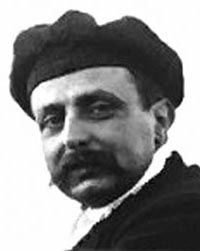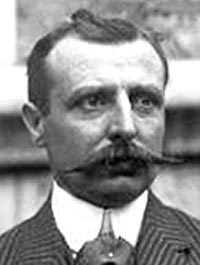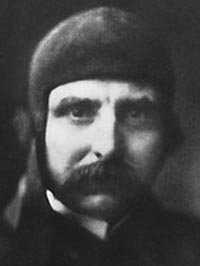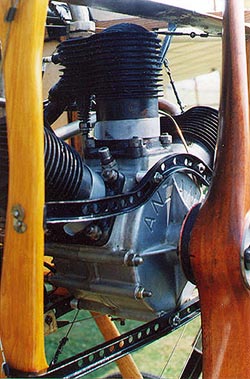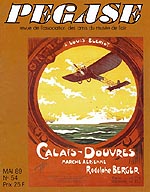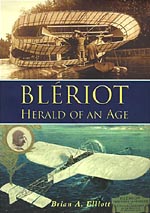
Louis Charles-Joseph Blériot (1872 - 1936)
Auguste Louis Blériot (b.July 1, Cambrai, France 1872; d. August 2, 1936), graduated from École Centrale Paris with a degree in Arts and Trades and went into business manufacturing automobile headlamps. At 30 he taught himself to fly, in an aircraft of his own design. His skills as a pilot and designer improved by trial and error. He made his first flight in 1907 at Bagatelle, France and in two years his aviation company was producing aircraft known for their quality and performance.
In the 1914-1918 War his company produced the famous S.P.A.D. fighter aircraft flown by all the Allied Nations. His skill and ingenuity contributed to the advance of aviation technology in his time, and popularised aviation as a sport. He remained active in the aviation industry until his death on August 2, 1936.
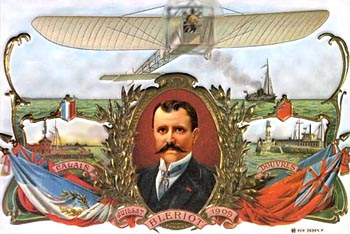 Blériot Promotional Card download a 750pixel image
Louis Blériot (1872 - 1936) Frenchman Louis Blériot successfully crossed the English Channel on July 25, 1909 in a small, 25-horsepower monoplane of his own design. He beat rival Hubert Latham, who had aborted an attempt six days earlier following engine failure, and won the London Daily Mail prize of 1,000 pounds for the feat. Blériot amassed a modest fortune inventing automobile lights and accessories before becoming interested in aviation. Initially he experimented by towing gliders over the Seine River and progressed to designing airplane models.
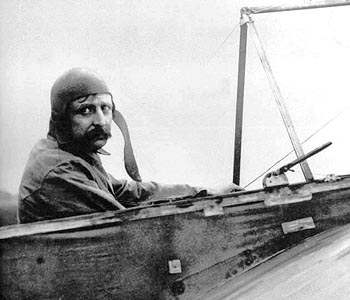 Blériot prior to take off on July 25, 1909* *image date to be confirmed download uncropped image
The Daily Mail offering prompted Blériot to attempt the crossing. He established a headquarters near Calais, France and waited for the poor weather conditions to break. When he noticed a slight drop in the winds he quickly readied the frail "No. XI" for flight. At 4:35 a.m. he took off into the murky sky and headed northward in the general direction of England.
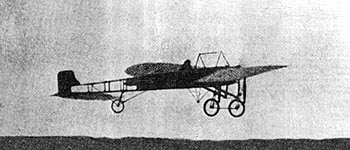 Blériot leaving Calais unauthenticated image
Alone in the craft, Blériot had no compass or instruments. Over the middle of the Channel he was unsure of his position, but held to his course. Finally the chalky cliffs of Dover appeared.
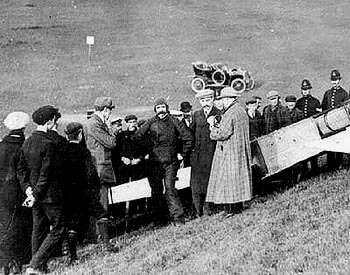 Blériot lands near Dover Castle, July 25, 1909 download a 750pixel image
After an erratic and perilous flight of about twenty-three miles, Blèriot landed near England's Dover Castle thirty-seven minutes after setting out. The dramatic event revealed the airplane's revolutionary potential to the people and governments of the world, effectively ending England's "island impregnability."
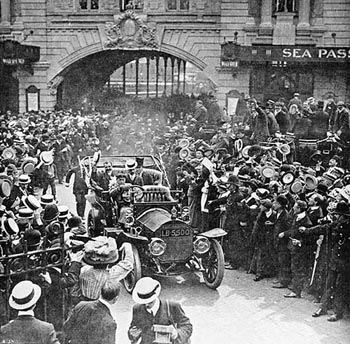 A hero's welcome into London, July 25, 1909
Blériot built aircraft for the French government during World War I and played a role in developing commercial aircraft after the war. Considered "the father of the modern monoplane" and "the pilot of the first epochal flight", he died a forgotten man in 1936, his contributions buried by an avalanche of progress in flight.
The Flight : First Channel Crossing by Air At the first light of dawn on the morning of July 25, 1909, Frenchman, Louis Blériot gave his crew the signal to release his small wood and fabric Model XI aeroplane. It crossed the grassy paddock and bounded into the air crossing the cliffs at Sangatte France, near Calais, and ventured out over the English Channel.
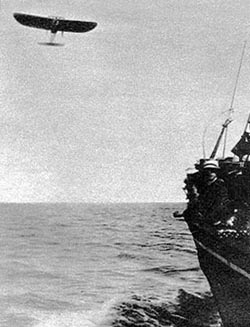 Blériot mid Channel during the crossing on July 25, 1909
Travelling at just over 40 miles per hour, and at an altitude of about 250 feet, the little monoplane out-paced its naval escort ship, the Escopette, which carried his wife Alicia. Within minutes Blériot was on his own over the channel and due to weather conditions could not see either coast for part of the flight.
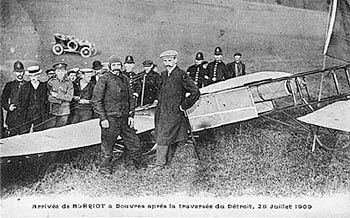 Blériot lands near Dover Castle, July 25, 1909, a contemporary postcard
Finally, thirty-six minutes after his departure, fighting dangerous cliff-side gusts, Blériot put down on English soil near Dover Castle. It must have been a dramatic scene for the small group of on-lookers as his plane dodged several brick buildings, was tossed about in the wind, and as Blériot cut the motor the craft dropped into a grassy field smashing the propeller and undercarriage.
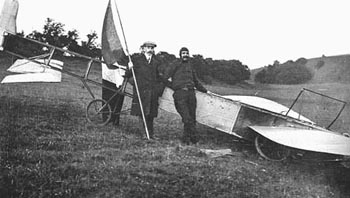 Blériot before the crowds arrived?, July 25, 1909 Person holding the flag is also in other images taken on July 25
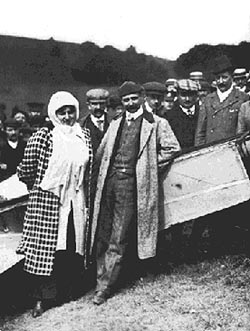 Blériot and his wife Alicia pose for publicity photograph July 26, 1909
His daring effort had landed him the coveted Daily Mail Prize of 1,000 Pounds Sterling. ...more
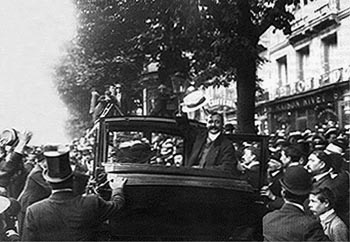 A hero's welcome into Paris, probably July 26, 1909
Blériot Flies the Channel ! Louis Blériot (1872-1937) was born in the north French town of Cambrai. He studied engineering, and went on to make a small fortune manufacturing headlamps for the booming automobile industry. He had been involved in aviation since 1900.
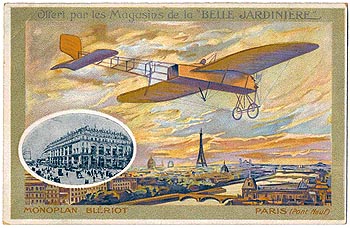 Blériot promotional card download a 750pixel image
His great passion rapidly ate into his wealth, however, as he built and crashed planes with undiminished enthusiasm! By 1909, though, he had developed a reasonably airworthy monoplane, his No. XI. The trouble was that its engine had never run for more than 20 minutes without overheating and stopping. ...more
Blériot began his lifelong obsession with aviation when he visited a local exhibition and saw Clement Ader's early, bat-wing shaped plane. Inspired by the strange looking craft, he began to build, test, and crash numerous planes of his own over the next nine years. Rather than follow one type of design for his planes, Blériot worked by trial and error - working first with gliders, then box-kite biplanes, and finally with monoplanes.
In a marketing ploy to increase its circulation, the "Daily Mail" newspaper of London offered a cash prize to the first pilot to fly across the English Channel - a risky proposition at the time. Blériot sensed this was his golden opportunity. Even though his plane had never run for more than 20 minutes - about half of the Channel's 22-mile distance - the pilot remained undaunted. In July of 1909, the three competitors each arrived on the shores of Calais, France. Latham had arrived first and attempted a crossing on July 19th. Six miles from shore, though, he developed engine trouble and was forced to make a sea landing.
While Latham was regrouping, Blériot watched the weather. At dawn on July 25th, he took off for England despite blustery winds and his injured foot. By the time Latham's camp realized that Blériot was not making a test run but attempting the crossing, it was too late to chase him. With no compass to guide him, Blériot beat the odds and managed to somehow successfully cross the Channel. He immediately gained worldwide fame. His rival, Hubert Lathan, even re-attempted Blériot's flight four days later, only to again smash his plane into the ocean when the engine failed.
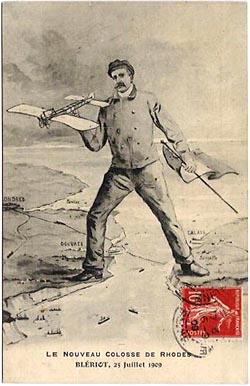 The New Colossus of Rhodes
While Blériot's flight was not the longest of its time, his achievement was nonetheless historic. His crossing captured the world's attention and continued to popularize the field of aviation. After his famous flight, Blériot formed a plane company which became quite successful, first manufacturing copies of his Blériot XI, and later producing the S.P.A.D. fighter flown by the Allies during WWI. Louis Blériot would continue to make contributions to the field of aviation until his death on August 2, 1936.
Louis Blériot : Excerpt from the PBS TV Series 'Chasing the Sun' Excerpt, Sound, 2:00, Real Video : 56k | 220k
'Blériot flies the plane which helped him cross the English Channel' Silent, 1:21, Real Video : 56k | 220k
'The Blériot XI takes off' Silent, 0:23, Real Video : 56k | 220k
Aircraft
Près d'une dizaine d'aéroplanes La numérotation des avions de Louis Blériot est exacte à partir du Blériot VIII et IX, car ces deux modèles cohabitaient dans le même atelier. La narration suivante n'est pas forcément juste, elle a été faite en fonction des dates des photos et des événements La période de 1900 à 1907 reste assez flou temps qu'à l'exactitude de la numérotation des appareils de l'époque .
Le premier de ces appareils fut donc un modèle réduit . C'est en 1900 que Blériot conçut ce modèle à ailes battantes, d'une envergure de 1.5 m et propulsé par un moteur à acide carbonique.
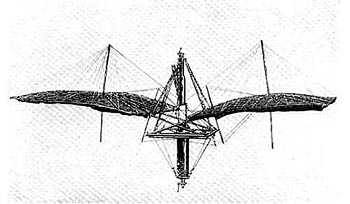 Blériot, 1, 1900 - 1901 Devaux, Jean et Marani, Michel, Les Douze Premiers Aéroplanes de Louis Blériot, Pegase, No. 54, Mai 1989
Devant des résultats satisfaisants, un brevet fut déposé dès 1901. Un modèle grandeur est mis en chantier, mais les trois moteurs à acide, conçut par Louis, explosent les uns après les autres .Ces derniers développaient une puissance de 10 CV . Le projet fut abandonné.
Le deuxième appareil est un biplan à flotteurs. Ce dernier est construit chez "Surcouf" par Gabriel Voisin. Le 18 juillet 1905 à Billancourt, sur la Seine, le planeur fut remorqué par un bateau à moteur. Après un vol plané mouvementé, l'aile gauche toucha l'eau et l'appareil sombra.
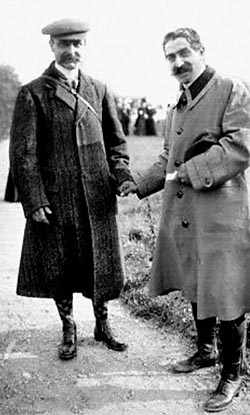 Louis Blériot and Charles Voisin, c.1905
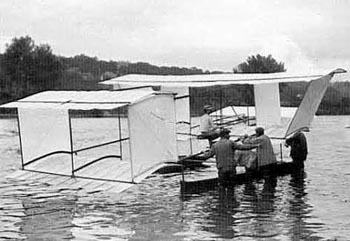 Blériot, II, Jul., 1905 Devaux, Jean et Marani, Michel, Les Douze Premiers Aéroplanes de Louis Blériot, Pegase, No. 54, Mai 1989
Blériot III, 1906 http://perso.wanadoo.fr Le troisième est toujours un biplan, mais avec des ailes à cellules elliptiques. Le moteur employé est un Antoinette de 24 CV, entraînant deux hélices tractives. Comme le précédant, il fut construit en association avec Gabriel Voisin, en mai 1906. Essayé sur le lac d'Engrain, il ne put décoller.
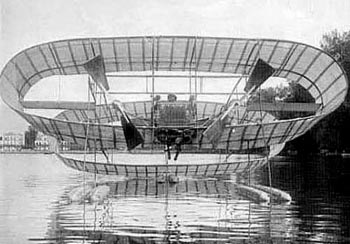 Blériot, III, May - Sep., 1906 Devaux, Jean et Marani, Michel, Les Douze Premiers Aéroplanes de Louis Blériot, Pegase, No. 54, Mai 1989
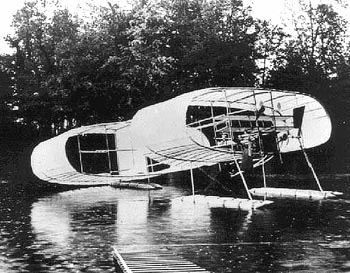 Blériot, III, May - Sep., 1906
Blériot IV, 1906 http://perso.wanadoo.fr En octobre de la même année, (1906) Blériot et Voisin décidèrent d'installer 2 moteurs Antoinette de 24 CV sur le précédent modèle. Cette installation incite les deux avionneurs à construire un nouvel appareil, en conservant l'arrière du n∞ III et en adaptant une voilure principale rectangulaire.
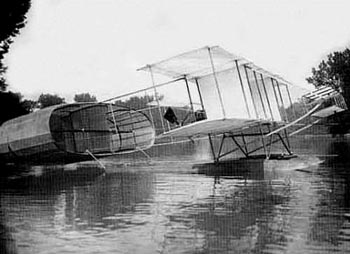 Blériot, IV, Oct., 1906 Devaux, Jean et Marani, Michel, Les Douze Premiers Aéroplanes de Louis Blériot, Pegase, No. 54, Mai 1989
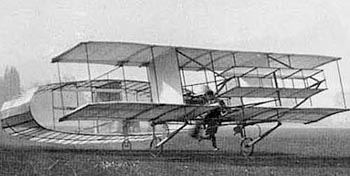 Blériot, IV, Nov., 1906 Devaux, Jean et Marani, Michel, Les Douze Premiers Aéroplanes de Louis Blériot, Pegase, No. 54, Mai 1989
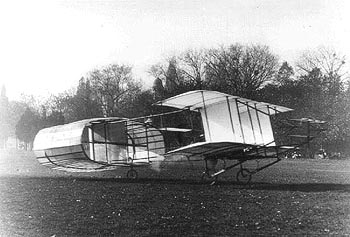 Blériot, IV, Nov., 1906 download a 750pixel image
Les deux moteurs entraînent chacun une hélice propulsive. L'aéroplane ne pouvant pas déjauger les flotteurs, ceux-ci furent remplacés par des roues. Les essais reprirent à Bagatelle le 12 novembre de cette même année. La difficulté à régler la synchronisation des 2 moteurs ne facilitait pas les choses. L'aéroplane se brisa en passant un caniveau .Il fut alors envisagé de remplacer les deux moteurs par un moteur Antoinette de 50 CV.
En 1906, Louis Blériot, alors âgé de trente-six ans, mit un terme à son association avec le pionnier de l'aviation Gabriel Voisin et se lança seul dans l'étude et la construction d'aéroplanes.
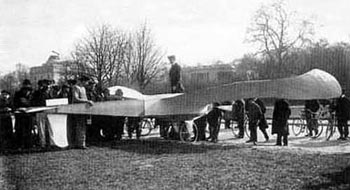 Blériot, V, Jan.- Mar., 1907 Devaux, Jean et Marani, Michel, Les Douze Premiers Aéroplanes de Louis Blériot, Pegase, No. 54, Mai 1989
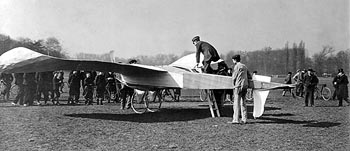 Blériot, V, Jan.- Mar., 1907 download a 1000pixel image
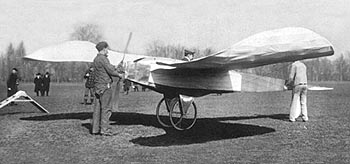 Blériot, V, Jan.- Mar., 1907 download a 750pixel image
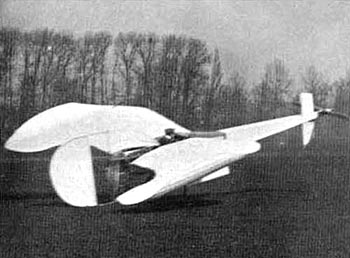 Blériot, V, 1st mod., Apr., 1907 Devaux, Jean et Marani, Michel, Les Douze Premiers Aéroplanes de Louis Blériot, Pegase, No. 54, Mai 1989
Blériot comprit que l'avenir était aux monoplans, et son premier projet, le Blériot V, était un monoplan à empennage canard; cet appareil s'écrasa après quelques vols et fut rapidement abandonné.
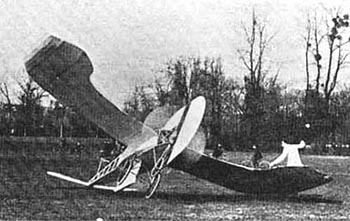 Blériot, V, 2nd mod., Apr., 1907 Devaux, Jean et Marani, Michel, Les Douze Premiers Aéroplanes de Louis Blériot, Pegase, No. 54, Mai 1989
La même année, il réalisa le Blériot VI Libellule, à ailes en tandem, avec lequel il réussit quelques sauts de puce à Issy-les-Moulineaux, au cours de l'été
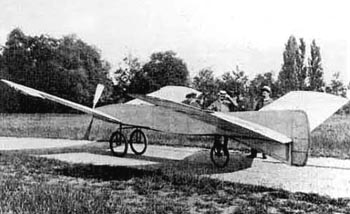 Blériot, VI, Jun., 1907 Devaux, Jean et Marani, Michel, Les Douze Premiers Aéroplanes de Louis Blériot, Pegase, No. 54, Mai 1989
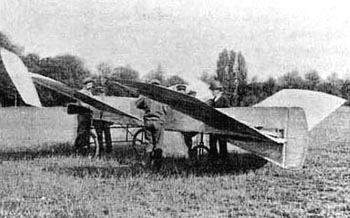 Blériot, VI, 1st mod., Jul., 1907 Devaux, Jean et Marani, Michel, Les Douze Premiers Aéroplanes de Louis Blériot, Pegase, No. 54, Mai 1989
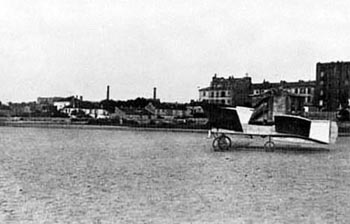 Blériot, VI, 2nd mod., Jul.- Aug., 1907 Devaux, Jean et Marani, Michel, Les Douze Premiers Aéroplanes de Louis Blériot, Pegase, No. 54, Mai 1989
L'avion ne put cependant dépasser l'altitude de 12 m avant d'être modifié pour recevoir un moteur Antoinette de 50 ch (37 kW), le double de la puissance du moteur précédent, et d'être rebaptisé Blériot VI bis.
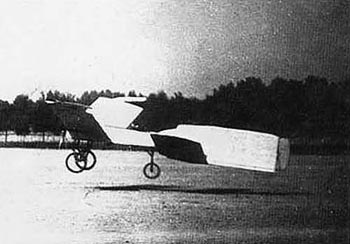 Blériot, VI bis, Aug.- Sep., 1907 Devaux, Jean et Marani, Michel, Les Douze Premiers Aéroplanes de Louis Blériot, Pegase, No. 54, Mai 1989
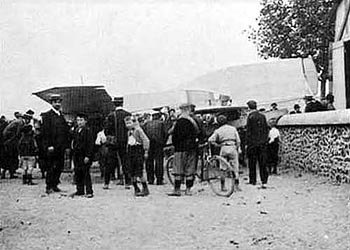 Blériot, VI bis mod., Sep., 1907 Devaux, Jean et Marani, Michel, Les Douze Premiers Aéroplanes de Louis Blériot, Pegase, No. 54, Mai 1989
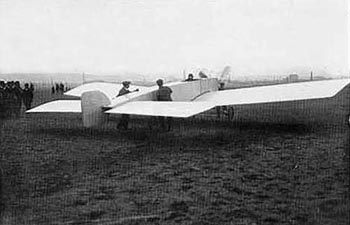 Blériot, VII, Oct.- Nov., 1907 Devaux, Jean et Marani, Michel, Les Douze Premiers Aéroplanes de Louis Blériot, Pegase, No. 54, Mai 1989
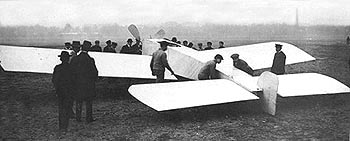 Blériot, VII, Oct.- Nov., 1907 download a 750pixel image
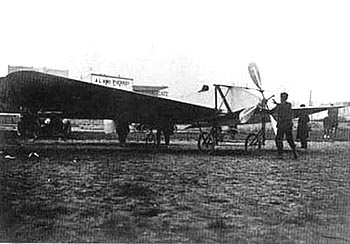 Blériot, VII, 1st mod., Nov.- Dec., 1907 Devaux, Jean et Marani, Michel, Les Douze Premiers Aéroplanes de Louis Blériot, Pegase, No. 54, Mai 1989
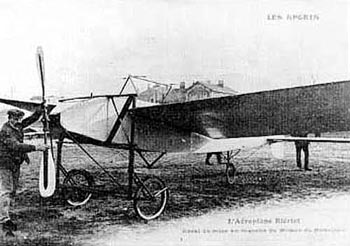 Blériot, VII, 2nd mod., Dec., 1907 Devaux, Jean et Marani, Michel, Les Douze Premiers Aéroplanes de Louis Blériot, Pegase, No. 54, Mai 1989
Un grand pas en avant fut franchi avec le Blériot VIl, un monoplan à moteur tractif, suivi par le Blériot VIII entoilé, reconstruit plus tard sous la dénomination de Blériot VIII bis puis Blériot VIII ter.
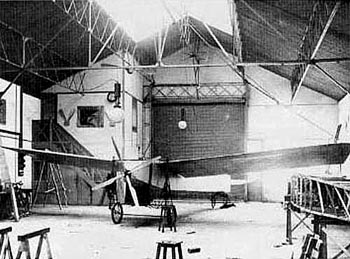 Blériot, VIII, Feb.- May., 1908 Devaux, Jean et Marani, Michel, Les Douze Premiers Aéroplanes de Louis Blériot, Pegase, No. 54, Mai 1989
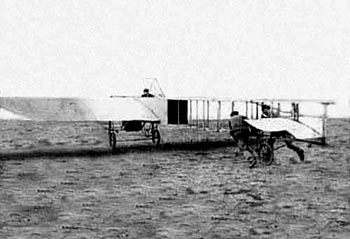 Blériot, VIII bis, Jun., 1908 Devaux, Jean et Marani, Michel, Les Douze Premiers Aéroplanes de Louis Blériot, Pegase, No. 54, Mai 1989
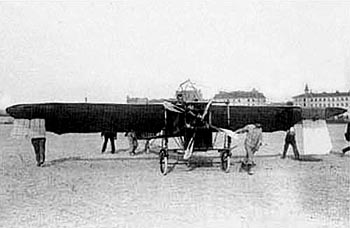 Blériot, VIII bis mod. Jun.- Jul., 1908 Devaux, Jean et Marani, Michel, Les Douze Premiers Aéroplanes de Louis Blériot, Pegase, No. 54, Mai 1989
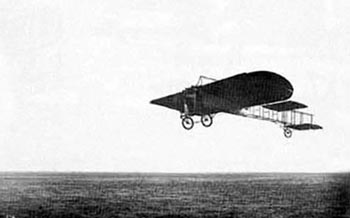 Blériot, VIII ter, Aug.- Nov., 1908 Devaux, Jean et Marani, Michel, Les Douze Premiers Aéroplanes de Louis Blériot, Pegase, No. 54, Mai 1989
Le Blériot IX, qui se révéla très nettement supérieur, avec ses ailes d'envergure réduite recouvertes de papier et son moteur de 65 ch (48 kW), fut présenté au salon de l'automobile de Paris en décembre 1908, mais ne vola jamais.
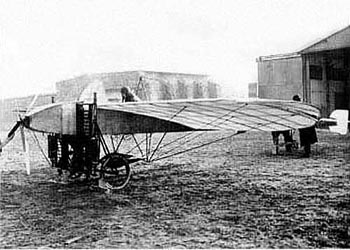 Blériot, IX, Feb., 1908 - Mar., 1909 Devaux, Jean et Marani, Michel, Les Douze Premiers Aéroplanes de Louis Blériot, Pegase, No. 54, Mai 1989
Le Blériot X, biplan à hélice propulsive, qui nefut pas terminé, lui succéda alors. Blériot n'avait obtenu qu'un succès très limité avec ses monoplans, alors que partout ailleurs les biplans donnaient la preuve de leur grande maniabilité.
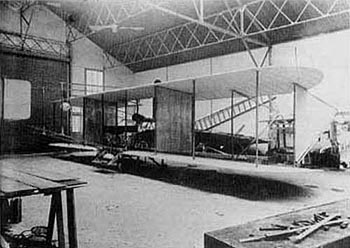 Blériot, X, Sep.- Dec., 1908 Devaux, Jean et Marani, Michel, Les Douze Premiers Aéroplanes de Louis Blériot, Pegase, No. 54, Mai 1989
Puis apparut le Blériot XI qui devait assurer à son constructeur une place de choix dans l'histoire de l'aviation. Le fuselage de cet appareil était réalisé en frêne avec des renforts et des entretoises en corde à piano, l'aile haute étant elle aussi en bois et le contrôle latéral étant assuré par le gauchissement de l'extrémité des ailes. L'empennage comportait un gouvernail central et des gouvernes de profondeur montées sur les plans fixes horizontaux. Le train d'atterrissage consistait en deux roues de bicyclette fixées à une paire de tubes en acier. Une troisième roue, de diamètre réduit, était installée sur une contrefiche placée sous le fuselage arrière. Le premier Blériot XI fut assemblé à Neuilly à la fin de 1908 et présenté à l'Exposition internationale de la locomotion aérienne au cours du mois de décembre de la même année.
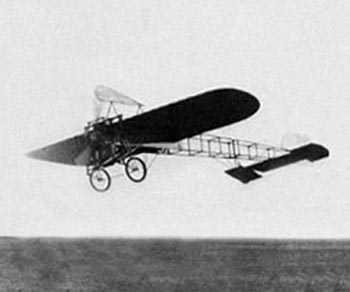 Blériot, XI REP, Nov., 1908 - Apr., 1909 Devaux, Jean et Marani, Michel, Les Douze Premiers Aéroplanes de Louis Blériot, Pegase, No. 54, Mai 1989
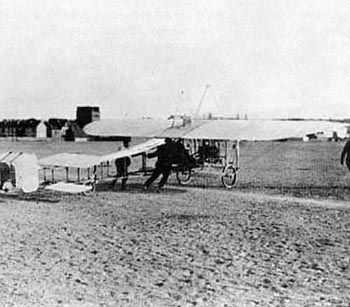 Blériot, XII ENV, Apr.- May, 1909 Devaux, Jean et Marani, Michel, Les Douze Premiers Aéroplanes de Louis Blériot, Pegase, No. 54, Mai 1989
L'avion effectua son prejpier vol à Issy-les-Moulineaux le 23 janvier 1909 avec un moteur REP de 28 ch (21 kW) Le premier appareil se distinguait par l'installation d'une surface verticale supplémentaire sur le dessus du fuselage avant qui fut rapidement délaissée en raison de son manque d'efficacité. De son côté le moteur REP fut remplacé par un Anzani de 25 ch (18,7 kW) entraînant une hélice Chauvière d'un excellent rendement avant la reprise des essais en vol le 27 mai 1909. Le 26 juin, Blériot à bord du Blériot XI modifié établit un nouveau record d'Europe : celui de l'endurance avec un vol de 36 mn 55 s. Ayant pris confiance, il décida de s'inscrire au concours du Daily Mail qui offrait un prix de l 000 livres sterling au premier pilote qui traverserait la Manche.
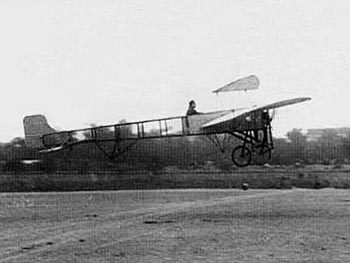 Blériot, XI Anzani, May - Jun., 1909 Devaux, Jean et Marani, Michel, Les Douze Premiers Aéroplanes de Louis Blériot, Pegase, No. 54, Mai 1989
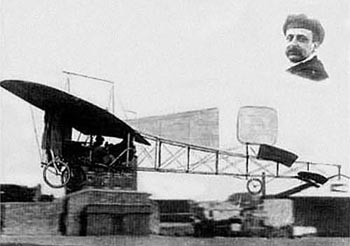 Blériot, XII 1st mod., Jun., 1909 Devaux, Jean et Marani, Michel, Les Douze Premiers Aéroplanes de Louis Blériot, Pegase, No. 54, Mai 1989
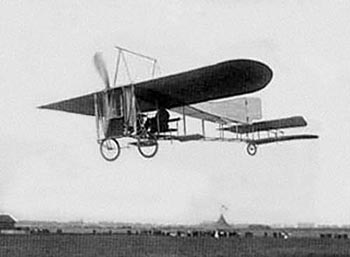 Blériot, XII 2nd mod, Jun.- Jul., 1909 Devaux, Jean et Marani, Michel, Les Douze Premiers Aéroplanes de Louis Blériot, Pegase, No. 54, Mai 1989
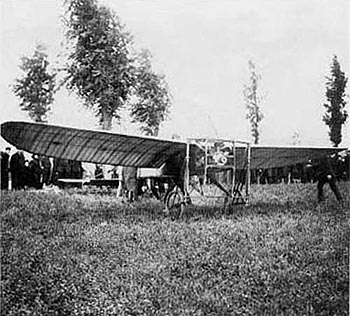 Blériot, XI mod., Anzani, Jun.- Jul., 1909 Devaux, Jean et Marani, Michel, Les Douze Premiers Aéroplanes de Louis Blériot, Pegase, No. 54, Mai 1989
Avant tout, Blériot avait besoin de reconstituer son capital, qui avait fondu comme neige au soleil tout au long des années passées à dessiner et construire ses avions. Le 25 juillet 1909 à 4 h 41, le pionnier s'envola d'un champ situé aux environs de Calais et, après avoir survolé la Manche à une altitude moyenne de 100 m, se posa, à peu près une demi-heure plus tard, sur une falaise près de Douvres.
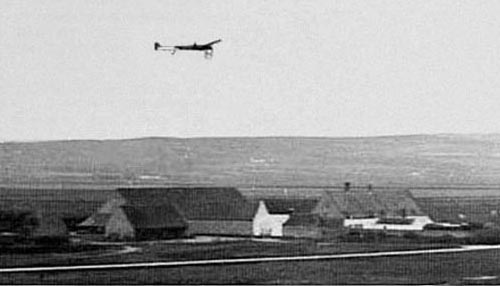 Blériot, XI mod., Anzani, 25 Jul, 1909, The Channel Crossing Devaux, Jean et Marani, Michel, Les Douze Premiers Aéroplanes de Louis Blériot, Pegase, No. 54, Mai 1989 download a 750pixel image
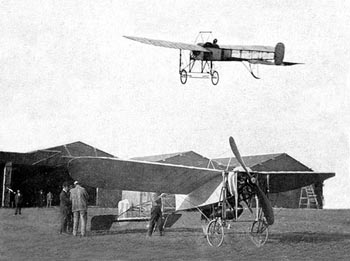 Blériot, XI download a 750pixel image
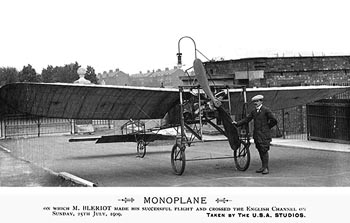 Blériot, XI download a 1000pixel image
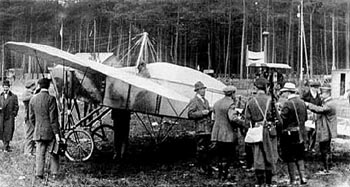 Léon Morane, Blériot, XI 2bis
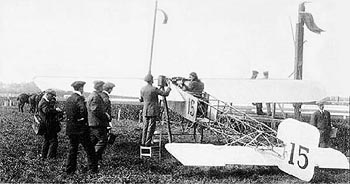 Léon Morane, Blériot, XI
Louis Blériot connut une gloire immédiate, et les commandes de Blériot XI affluant bientôt, il se lança dans la construction en série, en faisant toutefois appel au départ à des sous-traitants. Entre 1909 et 1912, pas un seul concours aérien en Europe ne se déroula sans un Blériot XI parmi les vainqueurs, cet appareil étant piloté par les plus grandes figures de l'aviation européenne. Parmi celles-ci figurait Adolphe Pégoud, rendu célèbre par ses loopings. A la fin de 1913, Blériot avait assemblé 800 machines, alors que la production globale de l'industrie aéronautique française, cette année-là, se montait à 1294 avions : une performance tout à fait remarauable.. Lorsque la France entra en guerre, en juillet 1914, l'aéronautique militaire possédait vingt-cinq Blériot XI, deux escadrilles de cavalerie étant équipées de monoplaces et quatre autres de biplaces Blériot Xl-2, propulsés par le Gnome de 70 ch (52 kW) et munis d'ailes plus larges (le Blériot Xl-2 pouvait emporter des grenades ou des fléchettes en acier). La première utilisation militaire du Blériot XI eut pour cadre la Cyrénaïque et la Libye, où l'aviation italienne combattit les Turcs en 1911 et 1912. Avant le début de la Première Guerre mondiale, le RFC et le RNAS britanniques avaient reçu quelques machines de ce type, et lorsque le conflit éclata, cinq squadrons du RFC en étaient dotés. Sans compter les machines importées directement de France, la Grande-Bretagne et l'Italie produisirent sous licence respectivement 104 et 70 exemplaires. Le Blériot XI BG ou Blériot-Gouin, variante biplace à aile parasol, fut conçu pour offrir une meilleure visibilité dans le cadre des vols de reconnaissance et de réglage d'artillerie. Un certain nombre fut employé pendant les premiers mois des hostilités par trois escadrilles françaises et par quelques unités britanniques en France, Les autres variantes militaires du Blériot XI furent le Blériot Xl-3, triplace avec un moteur de 120 ch (89 kW) ; le Blériot XI El, monoplace d'entraînement ; le Blériot Xl-2 bis, biplace côte à côte doté d'un empennage arrière ressemblant à celui des Taube allemands ; et le Blériot XI RI Pingouin, rouleur destiné à l'entraînement au sol, muni d'ailes rognées et utilisé sur une grande échelle par les Français et les Américains en France (ces avions ne pouvaient décoller en raison de la suppression du revêtement des ailes sur de larges surfaces). Au début de 1915, la plupart des Blériot avaient été retirés de la première ligne et expédiés dans les écoles. de pilotage. Un exemplaire fut restauré au cours des années trente, puis il effectua de nombreuses démonstrations aériennes avec l'escadrille Blériot. Atlas Copyright
Louis Blériot's Type XI Louis Blériot's Type XI incorporated many innovations including the monoplane wing, tractor engine, rear rudder, enclosed cockpit, horizontal stabilizer and swiveling landing gear to permit crosswind takeoffs.
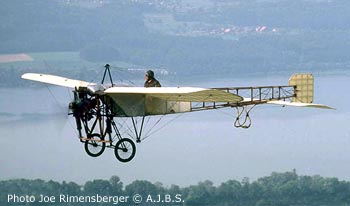 Blériot XI, a superb replica download a 750pixel image
In 1909 Blériot, in a Type XI, became the first to fly across the English Channel, flying from Calais, France to Dover, England on July 25th. Both a designer and a pilot, pioneer French aviator Blériot was still on crutches from a previous crash when he made this flight of 21 miles in 38 minutes- through fog and mist, without a compass. This airplane was powered by an Anzani engine, similar to that on the Bellanca. Anzanis were known to have problems with overheating, and had Blériot not flown through a passing rain shower, thus cooling his engine, he might not have completed his historic flight. Like almost all planes of this early era, bank was controlled by warping the wings. In 1913 a Blériot piloted by Adolphe Pégoud was the first aircraft to be flown in sustained inverted flight. Landing gear consists of simple bicycle wheels and rubber bungee cord shocks. Blériot Type XI: Span 25 ft. 7 in.; Length 26 ft. 3 in.; Takeoff weight 663 lbs.; Engine 25 hp. Anzani three-cylinder air-cooled fan-type (original); Salmson nine-cylinder air-cooled radial (representation); Speed 47mph.
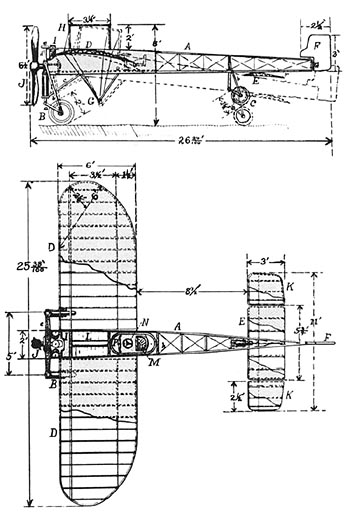 download a 750pixel image
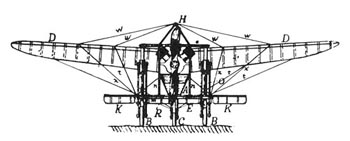 Blériot XI download a 750pixel image
Blériot Type XI Thanks to Louis Blériot's sensational flight across the Channel, the Blériot Type XI became one of the most popular pre-war aircraft. Blériot gave up competition flying, at the request of his wife, and concentrated on restoring the family's bank balance. He set up a factory to manufacture the XI or 'Channel crossing type' as it was often known and sold licences to other firms. A brand new Blériot XI cost £400 in 1909.
 Blériot XI
The first XI flew on 18 January 1909 (with an unsatisfactory R.E.P. engine) after being displayed at the French Aero Show in the Grand Palais, Paris. The XI did not have ailerons, as many of Blériot's earlier designs had, but instead used wing-warping to control bank. The elevators took the form of pivoting panels at the wing tips of the tailplane. (The red tapes in the colour picture below show where the sections started.) ...more
Blériot XI Wingspan 8.52 m (28 ft. 6 in.); Length 7.63 m (25 ft. 6 in.); Height 2.7 m (8 ft 10 in); Weight 326 kg (720 lb.), was the most famous and successful of several classic airplanes that emerged during the summer of 1909, when all Europe seemed to be taking to the sky. Louis Blériot, a French engineer and manufacturer of automobile head lamps and other accessories, first became interested in aeronautics in 1901, when he constructed an experimental ornithopter. During the next eight years he moved through a series of ten distinct aircraft designs, only one of which was capable of making a flight of more than ten minutes. Blériot's next effort, the Type XI, was designed primarily by engineer Raymond Saulnier, but it was a natural evolution from earlier Blériot aircraft and one to which Blériot himself made substantial contributions. It was first flown at Issy-les-Moulineaux, a military parade ground-turned-flying-field, on January 23, 1909. Further trials and various modifications proceeded through the spring. By the end of May, the Type XI was fitted with a 25-horsepower, three-cylinder Anzani engine, and throughout the remainder of the spring and summer Blériot was flying with regular success. The Anzani was somewhat crude, but it had a reputation for reliability, which was critical to Blériot's next challenge. Blériot achieved immortality in the Type XI on July 25, 1909, when he made the first airplane crossing of the English Channel, covering the 40 kilometers between Calais and Dover in 36 minutes, 30 seconds. It was not the longest flight to date either in duration or distance. But the symbolic impact of conquering the Channel by airplane made it the most widely acclaimed flight before Lindbergh. For the effort, Blériot captured the London Daily Mail prize of $2,500 that had been put up by the newspaper the year before for any successful cross-Channel airplane flight. Blériot's original Type XI today is in the possession of the Conservatoire des Arts et Métiers in Paris. In the afterglow of the Channel flight, Blériot received the first of many orders for copies of his Type XI monoplane. Variants of the original 1909 machine were produced by the Blériot firm, foreign licensees, and enthusiastic amateur builders in Europe and America into World War I. Hundreds were built. Many of the leading aviators of the day flew Blériot aircraft. ...more
The Blériot XI : from the PBS TV Series 'Chasing the Sun' Frenchman Louis Blériot had been intrigued by the possibility of flight ever since he attended a 1900 Paris Exhibition featuring experimental flying machines. Over the next few years, Blériot - who had amassed a small fortune manufacturing automobile lights - would spend all his money in his own quest to fly. Unlike the Wright Brothers and other aviation contemporaries, Blériot didn't take a systematic approach to his flight attempts. Filled with boundless enthusiasm, Blériot spontaneously leaped from one experiment to the next without much planning - or concern for his own safety. Blériot always tested his own planes personally, and his attempts, almost always, ended in crashes. Over the course of eight years, Blériot built ten planes - all failures. In 1908, when the London Daily Mail offered a cash prize for the first person to cross the English Channel, Blériot was bankrupt, having even spent the last of his wife's inheritance on his passion for flying. As luck would have it, Blériot wife happened to rescue a boy from falling off the balcony of a Paris apartment building. The young boy's appreciative father offered to fund Blériot latest experiment, the Blériot XI.
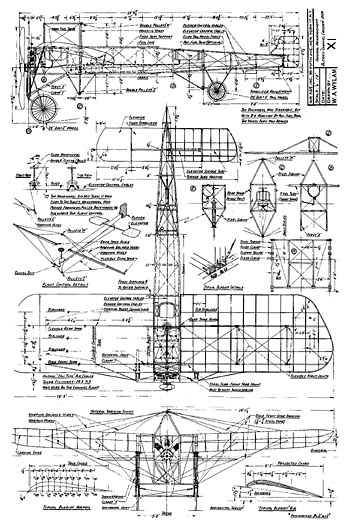 Blériot XI download a 1500pixel image in JPG [760 kb] or GIF [1.4 Mb] format
Blériot collaborated with designer Raymond Saulnier on the plane's construction. As a monoplane, the Blériot XI stood in stark contrast to its more common biplane contemporaries. Its single-wing design reduced drag and weight, enabling the plane greater speed and maneuverability. Lateral balance was aided by the plane's wing warping mechanism - derived from the Wright Flyer.
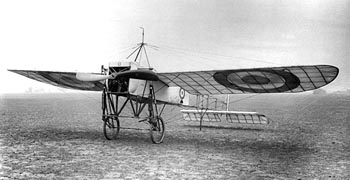 Blériot XI in military (RFC) colors download a 750pixel or 1500pixel image
The Blériot XI made its maiden flight on January 23, 1909. Over the course of the next several months, Blériot worked to improve the plane's performance. He made several modifications, including the addition of a 25-horsepower Anzani engine. Although the engine was rudimentary, it was known to be dependable - crucial if Blériot was to achieve his goal of crossing the English Channel. In the early morning of July 25, 1909, Blériot set out across the Channel. Without any navigational instruments, Blériot somehow managed to make his way from Calais to Dover in just over 36 minutes. He spotted a French reporter who had promised to identify a suitable landing area by waving a large French flag. Sixty feet off the ground, Blériot thrust the plane down for a hard landing. Emerging from the wreckage, Blériot's only injury was a burned foot that had been sustained days earlier. Instantly, Blériot and his plane received worldwide acclaim. Soon Blériot opened a factory to produce copies of the Blériot XI. Hundreds of orders came streaming in from around the world. Some of the best known-aviators of the time flew Blériot's planes, including Harriet Quimby who would cross the English Channel three years after Blériot. The Blériot XI's single pair of wings would serve as the new model from which future planes were derived.
Anzani 25 hp download a 500pixel image
Further Reading
Download the article. Each page is 750pixels wide and approximately 100-120kb Page 08, Page 09, Page 10, Page 11 Page 12 Page 13, Page 14, Page 15, Page 16, Page 17
bleriot.org
How to Build a Blériot-Type MonoplaneBlériot XI Replicas http://www.geocities.com Full time Engineering students at Burnie TAFE in Tasmania, Australia, are building of 2 flying replicas of a 1909 Bleriot XI see a short Quicktime movie of Burnie TAFE's Anzani 25, on loan to the school to enable the students to create patterns to cast their own engines.
Le Musée Volant : Blériot XI Replica
Louis Blériot
Louis Blériot
Louis Blériot: After the Channel
Louis Blériot: Trial and Error
and finally...
British Anzani - a Company History The original Anzani Moteurs d'Aviation was situated at 112 Boulevard de Courbevoie, Courbevoie, Paris and was established in 1907. The British Anzani Engine Company (it's name was changed to the British Anzani Engineering Company on February 18th 1927 when it was registered as a private company) was an agency of the original French operation and the first premises were established on November 20th 1912 in Scrubbs Lane, Willesden, London NW10. The first executive of the company was it's general manager Mr A.M. Ramsay (who was later also MD of the British Caudron aircraft company of Cricklewood and Alloa from 1914-24). It was part of General Aviation Contractors Ltd. a company which had been established in 1911 under Mr Ridley Prentice to supply aircraft and spares for the emerging British aviation market and which already had the agency for the French Anzani motors. From 1927 the US Anzani agent was a company called Brownback Motor Laboratories Inc, of 1038 Graybar Building, New York. Like the British company they made their own modifications to the engines which included changing the ignition and lubricating systems, the valves, rocker arms and piston designs. British Anzani was then solely concerned with making aero engines which were sold from the salesrooms of General Aviation Contractors in Regent Street, London and constructed by Coventry Ordnance Works Ltd., an engineering company known for their contract engineering skills. You could purchase a 25-30hp Anzani 3 cylinder for £172, a 40-45hp 6 cylinder radial was £300, a 50-60hp radial was £372, a 70-75hp 10 cylinder radial cost £500 or the 100hp 10 cylinder radial was £600. The 120 degree radial 3 cylinder was an uprated version of the original Blériot motor bored out to 120 x 130mm (35hp) while the 45hp radial was a two row machine (the first of it's kind) made by basically placing a second 3 cylinder motor behind the first at 60 degree rotation for equal cooling (likewise the 10 cylinder machines were 2 x 5 cylinder configuration). They featured cast iron cylinders, sprung auto inlet valves, rocker operated exhaust valves, two throw crankshafts, and slipper-type big ends to give their 45hp at 1,300 rpm. The production numbers were relatively small (125 engines were produced between 1914-1918) and during the Great War they were used mainly in British Caudron GIII and GIV trainers. The engine designs didn't alter drastically through this period although pushrod inlet valves were introduced and water cooling was tried, but reliability was always a problem.
|
© Copyright 1999-2003 CTIE - All Rights Reserved - Caution |
